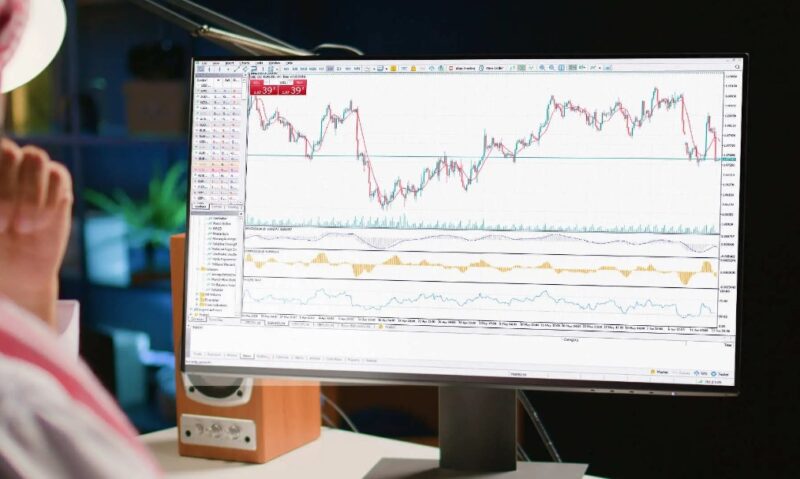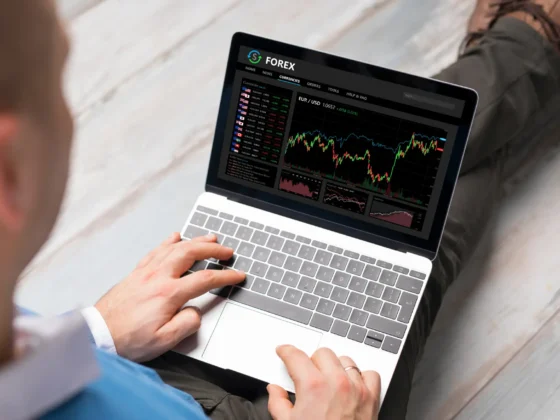Trading in today’s market can feel like entering a high-stakes game. You’ve seen the seasoned pros and thought, “How hard can it really be?” So, what’s it going to be? Will you trade with the knowledge and tools of an expert, or will you dive in unprepared and hope for the best?
Let’s tackle this with some practical insights, useful strategies, and a touch of humor. Trading should be smart and planned—after all, it’s your money on the line.
Key Points
- Decide on your goals before any trading move.
- Learn the tools and platforms available to you.
- Avoid common mistakes and manage risk carefully.
- Study strategies proven to work in different markets.
- Keep emotions out of it—stick to your plan.
Step One ─ Choosing a Platform
Starting in the trading world can feel overwhelming. That’s where picking the right platform comes in. For example, Binomo, an innovative platform, offers a demo account with $10,000, making it ideal for beginners who want to learn the ropes without risking real money.
Learning through a platform like Binomo lets you test strategies and get comfortable with trading mechanics before stepping into the real market. Always start with a demo account to build confidence, sharpen skills, and avoid costly mistakes.

Know Your Style ─ Are You a Long-Term Thinker or a Quick Mover?
Traders typically fall into two groups. First, there’s the calm, steady investor who takes a long-term approach, studying every market move and planning years ahead. Then, there’s the fast-paced player—the day trader—who lives for quick trades and rapid returns.
Figuring out your style matters. It’s like deciding if you’re a marathon runner or a sprinter. Jumping from one style to the other without knowing the differences can lead to confusion, losses, and even panic.
So, where do you stand? Find a strategy that suits you. Study other traders with similar styles. Gather insights into what makes them successful, and avoid reinventing the wheel. Recognize your strengths and lean into them.
Strategies Matter ─ Tips That Make or Break Your Trades
Trading without a strategy is like cooking without a recipe. Sure, you might get lucky, but more often than not, you end up with a mess. Strategies like technical analysis, where traders use data and chart patterns, can provide guidance on what moves to make. Some pros swear by this, while others focus on fundamental analysis, which involves looking at economic indicators and market news to understand trends.
Each approach has its strengths. Technical analysis helps with short-term decisions and entry and exit points, while fundamental analysis provides a bigger picture. Stick with one strategy until you master it. Once you’re confident, you can experiment with others. Jumping between strategies too soon is risky, so give each one a fair trial.

Risk Management ─ Don’t Let Losses Wipe You Out
A major difference between pros and amateurs is risk management. Pros always protect their capital. They use stop-loss orders and avoid investing their entire balance in a single trade. For a beginner, the thrill of risking everything on one trade might sound exciting. But remember, even one wrong move can lead to significant losses.
Set a limit on how much you’re willing to risk on each trade. Don’t exceed it. Some experts recommend risking only 1-2% of your total balance per trade. This lets you stay in the game longer and gives room to recover from any losses.
Quick Guide to Risk Management
|
Term |
Definition |
| Stop-Loss | An order is placed to sell once the asset reaches a certain price, protecting you from further loss. |
| Risk/Reward | The balance between the potential gain of a trade versus the potential loss; common ratios are 1:2 or 1:3. |
| Diversify | Avoid putting all funds in one asset or trade type. Try spreading investments across several trades or markets to minimize potential risks. |
| Margin Call | A broker’s demand for additional funds to keep the position open, triggered when the balance falls below the required minimum; often leads to forced closure. |
Practice and Learn Continuously
Top traders don’t get there overnight. Many pros spend years developing their skills. Just like learning an instrument or a sport, becoming proficient takes practice. Some platforms offer tools to help beginners experiment with strategies, build confidence, and learn from mistakes.
Keep practicing, review your moves, and look for patterns in your successes and failures. Success often follows those who show patience and dedication to their craft.

The Psychological Game ─ Keep Your Emotions in Check
It’s easy to get caught up in the thrill or panic of trading. Highs feel amazing, but lows can be devastating. Keeping emotions out of trading is critical. Every move should come from reason, not excitement or fear.
Some of the best traders maintain strict schedules, stick to plans, and avoid impulsive moves. They rely on data, not intuition. That level-headedness can separate winners from those who wing it and lose.
Staying Updated ─ Follow the Markets
Markets change fast, and staying informed is essential. Many factors can influence a trade’s outcome, from economic shifts to unexpected global events. Staying updated lets you adapt your strategy and anticipate market reactions.
Follow reliable news sources, subscribe to alerts, and read analysis reports from experts. A well-informed trader has the advantage, even when markets seem unpredictable.
FAQs
1. How much money do I need to start trading?
Some platforms allow you to start with as little as $10, but make sure to set realistic financial goals.
2. How do I choose a trading style?
Consider your time commitment and risk tolerance. Day traders need quick reflexes and full attention, while long-term investors need patience.
3. Can I trade part-time?
Yes, but it requires discipline. Set time aside daily for research and managing your portfolio.
Trading success lies in the details. Prepare, learn, and practice. Recognize that winning in trading requires patience, control, and a willingness to improve.


